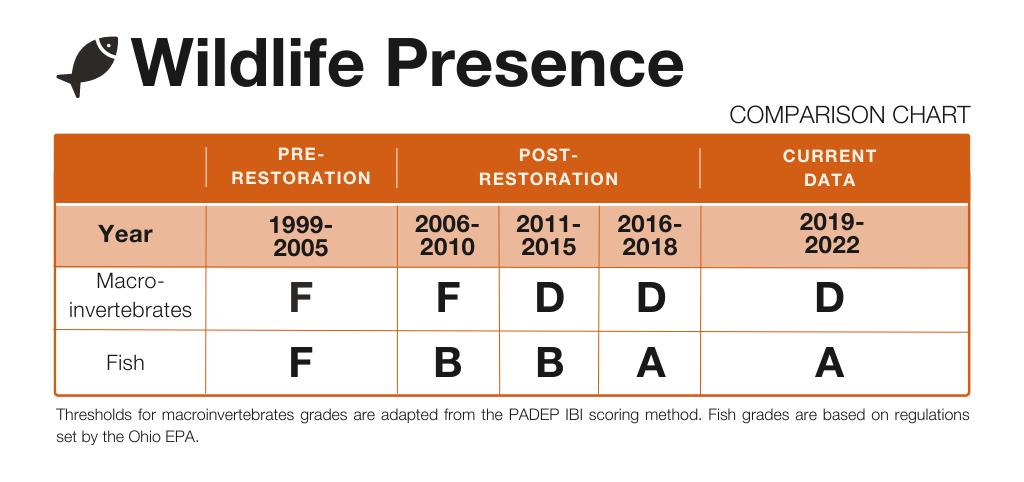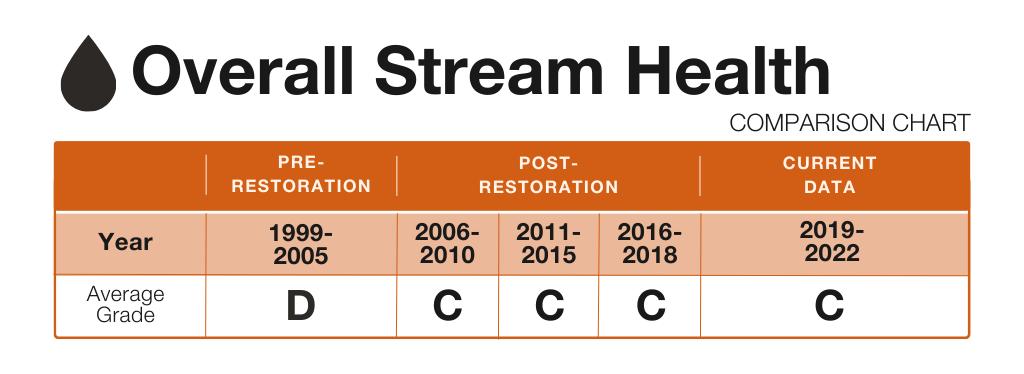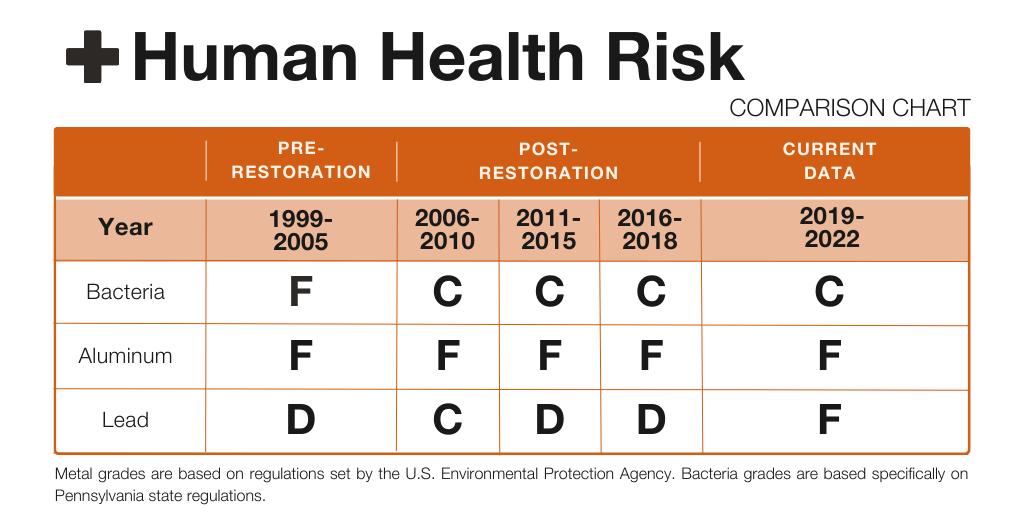
1 minute read
Statistics and Data NMR Restoration Area Report Card

written by Aaron Birdy
Advertisement
Overall Stream Health
Data shows that the Nine Mile Run (NMR) Aquatic Ecosystem Restoration led to improved water quality. However, NMR is still affected by the surrounding urban environment; high nitrogen, bacteria, and metal levels still reflect poor overall stream health. Fifteen years after the restoration, the stream is not yet safe for recreational activities like fishing and swimming.
Human Health Risk

Bacterial contamination is caused by failing sewer infrastructure along the stream, as well as pet and wildlife waste. Exposure to bacteria can cause illness or infection. Toxic metals, the result of stormwater runoff, pose potential threats —including anemia and neuropathy—to humans and wildlife.
Aquatic Habitat Support

Water quality determines the health of a stream; it can be degraded by sewage contamination, stormwater runoff, industrial waste, and pet/wildlife waste. It’s important to note that parameters vary seasonally and are greatly impacted by rain events. Due to climate change, Pittsburgh is seeing increasing amounts of rainfall, often above the average of 38 inches annually.
Wildlife Presence
The presence and diversity of aquatic wildlife are key indicators of ecological health, as these species depend on the entire stream ecosystem for their survival. Diversifying fish populations indicate a recovering stream habitat, although it is still too polluted for most macro-invertibrates.
Want to dive directly into the data?
Scan to experience our new State of the Stream interactive dashboard!









